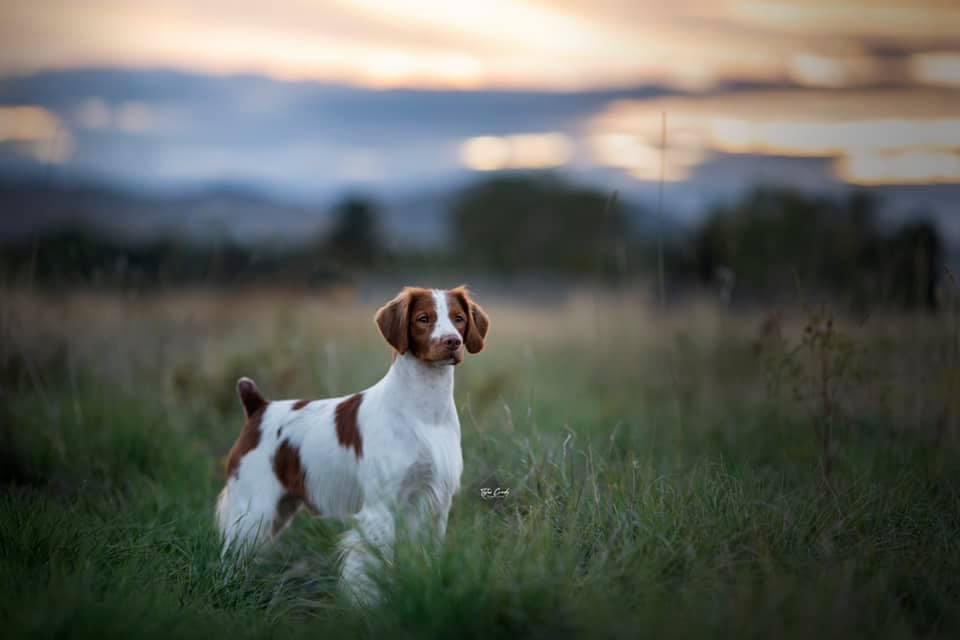
“Form follows function.”
Few “three-letter-phrases” better explain why breeds look the way they do, especially in breeds that work.
The fabulous Brittany is a stellar example. While athleticism is key in evaluating a Brittany overall, “the devil is in the details,” as they say, and in this post, we focus on the breed’s ears.
A Brittany’s ears are very breed specific. They are set high above the level of the dog’s eyes, they are short and triangular, and they lie flat and close to the dog’s head.
The breed’s AKC standard fleshes this out: “Ears – Set high, above the level of the eyes. Short and triangular, rather than pendulous, reaching about half the length of the muzzle. Should lie flat and close to the head, with dense, but relatively short hair, and with little fringe.”
This is all well and good, but a novice to the breed needs more to understand the “why” of this language. We’re using the images of a couple of lovely retired show dogs to illustrate.

“Ashton” (MBIS GCHP2 Dream HI’s Don’t Hate The Player Hate The Game); Photo Credit- Tyler Crady. Shared with permission by Kristina Rickard
Let’s break this down into smaller parts: Positioning, shape, and coat.
The positioning of a Brittany’s ears – set high and above the level of the eyes – allows for better sound reception. This enables the dog not only to pick up subtle noises made by birds or other prey in the field, but helps the dog pinpoint the direction of sounds accurately. No hunter would be satisfied with a dog that “kind of, sort of” knows where a bird is. A sound Brittany is an effective hunting dog because s/he is able to locate the precise position of a game bird. Furthermore, the ears’ triangular shape helps funnel not just sounds, but scents towards the dog’s nose. And finally, as ears go, a Brittany’s is very mobile. Their upward movement at the base lends itself to the Brittany’s expression. As seen in these photos, ears like this were tailor-made to hunt with “exceptional directional hearing and scenting” which contributes to the breed’s overall alertness in the field.
Moving on to coat, the ears of a Brittany have “relatively short hair with little fringe.” There is enough coat to protect the dogs inner ear from debris, brush, and weeds while hunting, but not so much coat that hair on the ears attract every burr, weed seed, or twig in the field. The dog can focus on hunting, and not be distracted by something sharp embedded in their skin. There is also enough coat to regulate body temperature during intense hunting activities, a contributing factor to the breed’s stamina and endurance during long days in the field. In short, the Brittany ear coat is designed to give her the best protection for upland game work with a minimum of interference.
A Brittany does not hunt on its ears, of course, and this isn’t a “head breed,” but ears surely contribute to the breed’s ability to quickly pick up and respond to sounds and scents.
Our thanks to Kristina Rickard to responding to our “call to action” when we needed photos!
Top image: “Chester” (GCHG Millette’s Game Player) by Tyler Crady and shared with permission by Kristina Rickard
